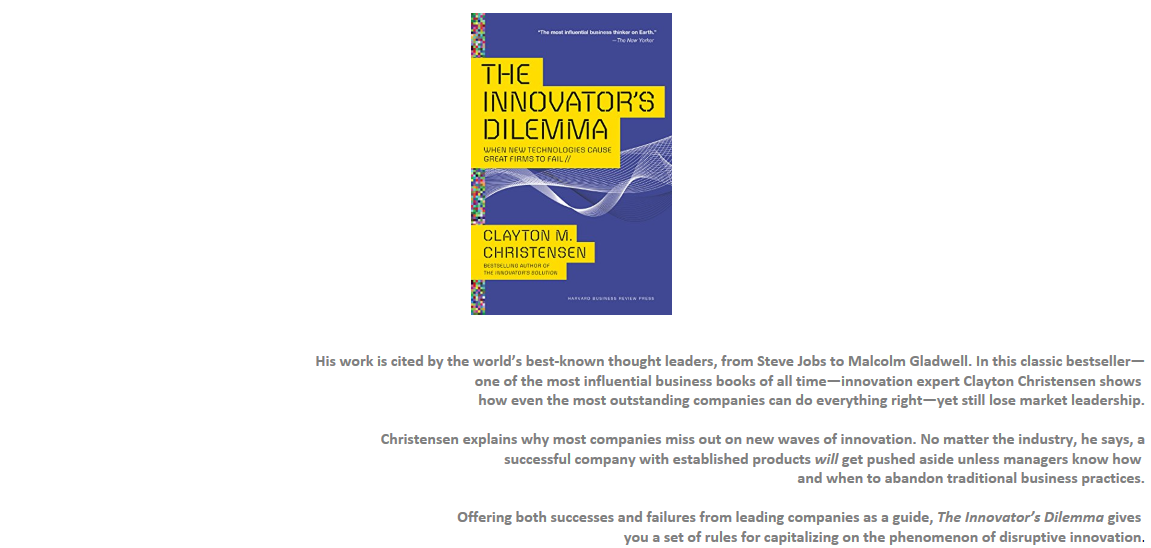
What should managers do when faced with a disruptive technology that customers do not want?
- Convince Everyone in the Firm that the company should pursue it anyways. That it has strategic advantage.
- Picking a fight. Because most people with align with resource dependency.
- Create an independent organization and embed it with the customers who DO need the technology.
- This is harnessing instead of fighting the power.
Match the size of the organization to the size of the market: Leadership is more crucial in coping with disruptive technologies than established ones. Also, small emerging markets cannot solve the near term profit requirements of large organizations.
Leadership in sustaining technologies has historically conferred little advantage to the followers. Though leadership in disruptive technologies imparts enormous advantage.
It’s when a market is small – thus not meeting the needs of the giant players – that makes entry into that market so critical. Author has isolated 3 ways to impact this scenario:
- Try to make a large enough impact on the emerging market that it grows enough to put a dent in the revenue growth of the large players.
- Fraught with problems
- Wait for the emerging market to get bigger, then get in
- Fraught with problems
- Place responsibility to disrupt in an organization small enough that the revenue brought in is meaningful.
The Apple 1 computer sold only 600 units in 1976. But they learned enough that the Apple 2 was better in 1978 and sold 143k. Which helped them go public in 1980. In 1994, they spent a bunch of money on the Newton which sold about the same. Was a $5b company then and that was 1% of revenue. Which is a failure.
A project to commercialize a disruptive technology, in a small emerging market, is very hard to be considered essential for success in a large company. They don’t solve the growth needs. Rather than constantly convince everyone that the market will grow and become significant, or at least strategically important – it’s easier to embed the company in an organization small enough to be motivated by the opportunity. Done by spinning out a division. Or acquiring a small enough company. Otherwise if denying the fundamental aspects of companies.
Johnson & Johnson have over 160 smaller companies.
Discovering New & Emerging Markets: What doesn’t exist is unknowable. You must account for the uncertainties. Must be a planned research approach for building and marketing.
A vast majority of disruptive businesses end up mostly abandoning – or radically pivoting from – their initial product. The successful ones recognize it early and have conserved enough money to move in the new direction. Or have backers willing to reinvest. Those that run out of money or credibility before they can iterate to a viable strategy are the ones that fail.
Failed ideas are easier to overcome than failed managers.


